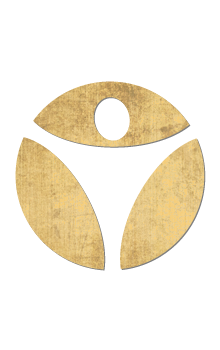Yoga for Climbers
- Updated on: April 29, 2022

Whether you boulder in a gym or enjoy climbing outdoor crags, all climbers can benefit from yoga. Yoga pairs well with climbing because it can help you develop all of the essential skills and qualities good climbers need from physical strength to mental discipline.
As a climber, your best assets are:
- Strength in the upper body, lower body, and core to push and pull with power.
- Flexibility in the hips to increase your range of motion.
- The ability to lengthen the upper body and grasp for climbing holds.
- A focused, calm, and disciplined mind to keep you cool in stressful situations.
But, if you aren’t finding ways to tend to these assets outside of your climbing time, you’re likely missing out on opportunities to develop strength and support the dominant climbing muscles of your upper and lower body. You’re also lacking intentional time to stretch and counteract the tightness of your muscles. Finally, above all else climbing is a mental sport, and if you aren’t developing your mindset outside of the gym, you could be missing out on your full potential as a climber.
Why Should Climbers Practice Yoga?

Yoga can help you develop all of these physical and mental qualities so that you can improve your climbing abilities. Luckily this doesn’t have to be complicated (AKA you can spend more time where you love to be: in the climbing gym!).
Incorporating just a few key yoga postures regularly will help you transform your rock climbing. Climbers who consistently practice yoga notice a wide range of benefits. Yoga helps you experience increased flexibility to better navigate tricky climbing movements. It helps you steady and control your breathing to improve focus under pressure.
In addition, your yoga practice can result in improved strength and engagement of both the agonistic (active) and antagonistic (supporting/stretched) muscles (i.e. the bicep is agonistic when the tricep is antagonistic). All of these benefits work together to reduce the risk of injury and help you boost your way to that coveted 5.13 climbing grade (or beyond).
So, set aside your chalk bag and roll out your yoga mat for a change of pace that will elevate your climbs and leave you feeling strong, agile, and focused.
5 Best Yoga Postures for Climbers

Yoga is a great tool to complement your climbing practice. But that doesn’t mean you need to spend more time on a yoga mat than the climbing gym mat. Instead, short, targeted yoga practices can help you achieve the results you’re looking for without needing to dedicate hours to the practice. Here are 5 powerful yoga postures that will improve flexibility, strength, breath-work, and mindset for your next climb.
Tabletop with Palms Reverse
Why climbers love this pose: Climbers use their hands, wrists and forearms regularly. While climbing these muscles are constantly contracting to keep your movements steady and controlled. It’s essential to tend to the wrists and forearms and this posture targets your wrist flexors and extensors
Find yourself in a regular tabletop position on your hands and knees. Mindfully rotate your fingers outward until they point towards your knees. If this stretch feels too intense for your forearms, you can point the fingers towards the edges of your mat. Hold for several breaths. If you’d like to deepen the stretching sensation, you may slowly press your hips towards your heels. You can control the depth of the stretch to find what feels best for your body.

Hero’s Pose
Why climbers love this pose: as important as it is to tend to the forearms and hands, it is equally as important to care for your feet! This pose focuses on the arches of the feet and can help build flexibility throughout the lower body to counter all of the strength you’ve developed as a climber. Plus, it feels awesome right after taking your tight climbing shoes off!
From a tabletop position, keep your toes curled and slowly use your hands to walk your hips to your heels. You’ll feel sensation in your toes and the arches of your feet. If this is overwhelming, keep your fingertips resting on the mat to control the depth of the stretch.

Warrior III (Airplane Pose)
Why climbers love this pose: This posture builds hamstring strength while engaging the core and developing your shoulder muscles. Plus it allows you to hone your balance and stability.
Start in Mountain Pose and step forward onto one foot. As you find your balance, hinge forward at the hips until your torso is parallel to the floor. You may keep your hands on your hips to start. For a challenge, and to fire up the core and shoulders, extend your arms forward into a prayer position, keeping them in line with your ears.

Low Lunge
Why climbers love this pose: This pose is an excellent way to open the groin, hips, quads, and hamstrings all at once! Plus, it can develop strength in your knees to protect this joint on your next climb.
From downward dog, step one foot forward framing your foot with your hands. Allow your opposite knee to rest on the floor. Hands can come to rest on your upper thigh or your hips. To open the chest, abdomen, and front body, you can raise your arms overhead and even extend into a gentle backend.

Handstand & Handstand Prep
Why climbers love this pose: Handstand and Handstand prep postures work the core, stretch the flexors and open your shoulders creating more mobility. They also help climbers learn about body tension. Body tension happens when your muscles work together to resist external forces (like gravity). This kind of tension is what keeps you from falling from a handstand or the climbing wall.
Handstand is often put on a pedestal as an elite yoga posture. While it can be challenging and may not be within your reach right away, we believe all levels of yoga practitioners can reap the benefits of a handstand before they can hold a full handstand. This is possible thanks to Handstand Prep Postures.
Handstand L’s are a perfect place to start! This handstand prep variation will teach your body how to get into and hold a handstand. Over time you’ll feel more and more confident as you explore the full expression of the pose.
Start facing away from the wall. Place your hands flat on the floor and walk them forward a few feet until you can start to step one foot on the wall. Start to walk the feet up the wall until your body creates an “L” shape. Be sure to keep shoulders stacked over your wrists, soften the shoulders from your ears, and pull your abdomen in to engage your core. Tuck your chin in to start. Over time you might explore gazing toward your hips.

Bonus: Yoga Breathwork
In addition to the physical postures, yogic breath-work can be extremely beneficial to you as a climber. “Victorious” Breath is often used in Hatha or Vinyasa yoga and can even be used during your next climb.
To practice Victorious Breath, breathe in and out through the nose while constricting the back of your throat (this sounds like a snore or an ocean wave). This can help you focus on the breath to center you. It is also a powerful breath that can help you harness your physical and mental strength in challenging climbing situations.

When Should Climbers Practice Yoga?

Before You Climb
While a vigorous vinyasa practice may overexert your body before a run, some gentle yoga postures to activate and stretch your muscles can help you prepare for your climb. Warrior III/Airplane Pose (outlined above) is a perfect option as it will stimulate the arms, legs, core, and stabilizing muscles so they are ready to go without exhausting them. Handstand and Handstand Preps are another excellent way to engage the shoulders and core while helping you prep for your climb with some stability and balance work.
After You Climb
After climbing is an ideal time to integrate some yoga since your body is warm. Ideally, you’ll want to take time to immediately stretch out the hands and forearms with Tabletop Pose. Then, use Hero’s Pose with toes tucked to stretch the tense arches of the foot. If you have the energy, you may move through a few sun salutations. Sun Salutation A and Sun Salutation B are yoga sequences that offer fluid movements and stretches to counteract the engagement, tightening, and contraction you just experienced during your climb.
On Rest & Recovery Days
All climbers know that it is important to take time away from the climbing wall, but this can be tough. Most climbers enjoy being active and finding movement– it can be hard to sit still. This is what makes yoga a perfect addition to your rest day routine. Gentle yoga is ideal on a rest day. Taking time off from climbing helps your body repair, restore, and recharge. We recommend yin or restorative yoga practices on these days.
Here are some of our favorite restorative poses for climbers:
Starfish
Why climbers love this pose: Your biceps work hard on the climbing wall, but biceps are one of the trickiest muscles to stretch. Star Pose helps to target these muscles so they can get the much-needed opening they deserve.
Start laying on your abdomen. Extend your right arm out, palm flat, and place your right cheek on the mat. Use your left arm to gently roll onto your right side until you feel sensation. Breathe deeply. When you’re ready, switch sides.
Hand Under Foot Pose
Why climbers love this pose: It’s a deep stretch for the hamstrings and the hips. It also engages the quads while promoting stability and balance. Hand Under Foot Pose will relax and soften the muscles in the hands. Walking gently on the palms can be a nice massage for the palms and can relax the wrist joints. Plus, having the head below the heart is great for circulation.
While in a forward fold, step your feet on your hands, palms face up. Try to walk your toes as close to the wrists as you can. To deepen the hamstring stretch, gently bend the elbows wide to pull the crown of your head toward your toes.
How To Start Your Yoga Practice

Adding any or all of these postures into your climbing routine will help you improve your strength, mobility, flexibility, and focus as a climber. If you are looking for accountability, variety, and trusted posture guidance from our yoga instructors, be sure to explore Body by Yoga’s free library of tutorials and routines so that you can feel confident in your yoga practice.
For a more structured practice that’s specifically designed for athletes, our Yoga Edge Program will increase power, strength, and mobility as you soothe sore muscles, protect your joints, relieve pain, and enhance your recovery in under 30 minutes a day.

Recent Posts
Categories
Related Articles
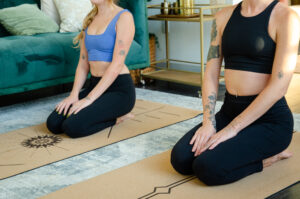
Breathing technique to improve your yoga practice
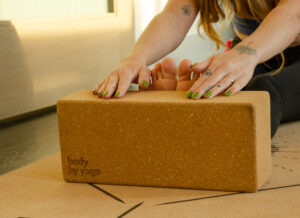
Benefits of yoga before bed
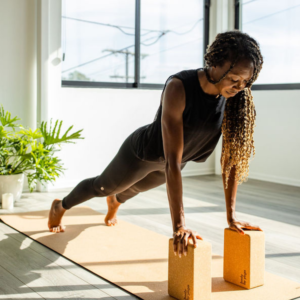
Taking the next step to more challenging yoga
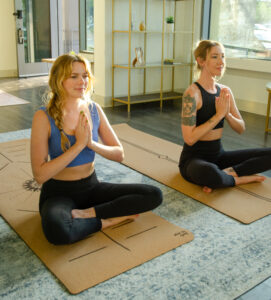
Hatha vs Power yoga
Related Articles
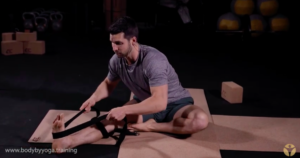
Good Stretch For Lower Back And Hamstrings
This stretch can be done before or after a workout. It’s simple, but very effective. Stretching your legs can help alleviate back pain as well.

Taking the next step to more challenging yoga
Yoga is for anyone at any level. We want everyone to feel challenged in their practice so we’ve created all-inclusive classes that will help improve
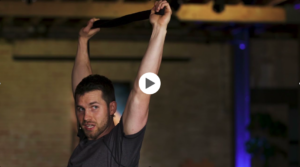
Mini sequence for beginners
We created this video for a quick sequence to stretch and build strength in your hips and shoulders. We start the video touching on
